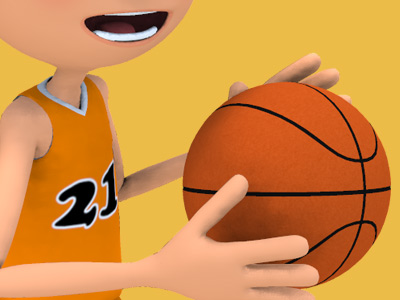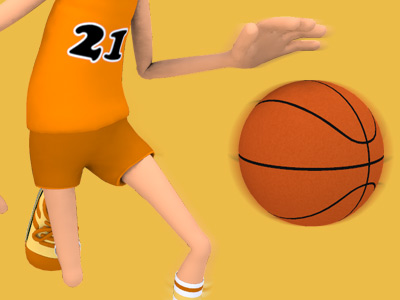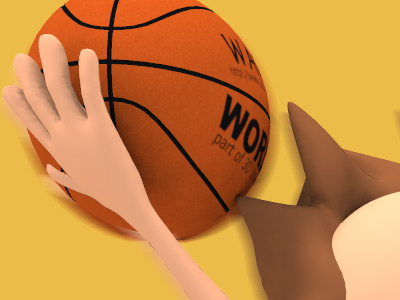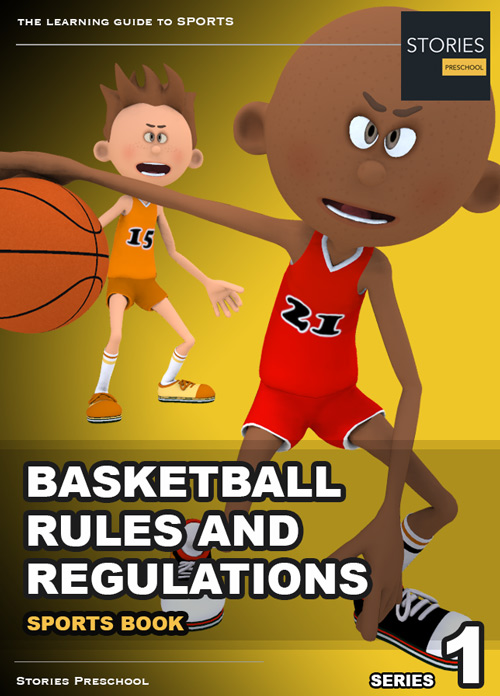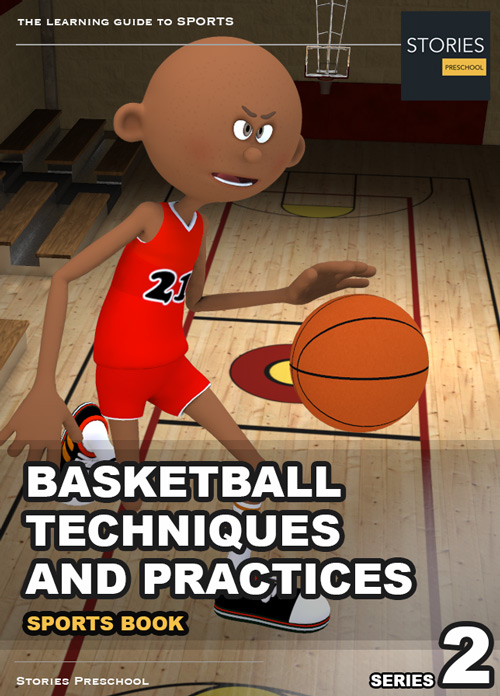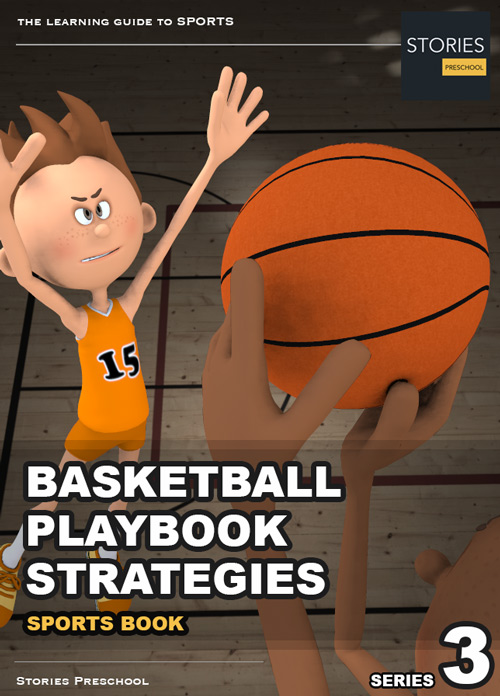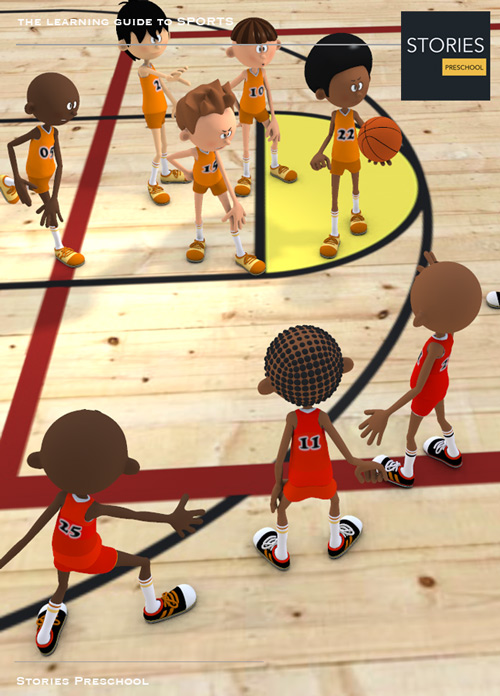Basketball

Layups
A layup in basketball is a two-point shot attempt made by leaping from below, laying the ball up near the basket, and using one hand to bounce it off the backboard and into the basket. The motion and one-handed reach distinguish it from a jump shot.

The layup is considered the most basic shot in basketball. When doing a layup, the player lifts the outside foot, or the foot away from the basket. It is a foul if, during your layup, you hold the other person's hand or push it away to avoid him or her from defending. On the other hand, it is considered a foul if the defender jumps in front of you in the middle of nowhere and you both crash, in this case the defender causes a foul. A layup is very handy and to defend it, you just basically need to stand in front of the opponent with your arms stretched out.
An undefended layup is usually a high percentage shot. The main obstacle is getting near the rim and avoiding blocks by taller defenders who usually stand near the basket. Common layup strategies are to create spaces, release the ball from a different spot, or use alternate hands. A player able to reach over the rim might choose to perform a more spectacular and higher percentage slam dunk (dropping or throwing the ball from above the rim) instead.
Versions
As the game has evolved through the years, so has the layup. Several different versions of the layup are around today. Layups can be broadly categorized into two types: the underarm and the overarm. The underarm layup involves using most of the wrist and the fingers to 'lay' the ball into the net or off the board. This layup is more commonly known as the finger roll. George Gervin was one of the early practitioners of a showy finger roll layup. Notable past NBA players who rely heavily on the underarm finger roll are Mike Bibby and Allen Iverson.

Around the World
Finger rolls today have many forms, including the "Around the World" which involves a complete circle around the player before the layup and a variety of faking in the approach to the rim. A classic example is a play by Jason Williams during his time with Sacramento, in which Williams brought the ball behind his back with his right hand, in a fake of a back pass, and then brought it front again with the same hand for the finish (reminiscent of Bob Cousy, who pioneered the move).
Overhand Shot
The other layup is the overhand shot, similar to a jump shot but from a considerably close range. Overhand layups nearly always involve the action of the backboard. Players like Scottie Pippen and Karl Malone have used this move to great effect.
Layups can get into more depth than the overall picture of making the shot in from up close. Here is another classy yet stylish layup players can try.

Reverse Layup
The Reverse Layup is the most stylish and effective method of making the ball from close. Generally you fake the defender into defending a regular layup on the near side and then jump to the far side of the basket before shooting. For this move to work, one must dribble to the basket, and taking note of the opponents already there. Make a fake right (left) hand layup while cutting under the basket and opponents. Take two steps, and jump off the right (left) foot. In the air make a sweeping hook shot with the left (right) hand. The aim for the ball should be the top left (right) corner edge of the square.
Tear Drop
The tear drop, also called a runner or a floater, is usually performed by undersized players (mainly point guards). A player usually starts the layup procedure a good distance away from the basket. The ball is generally released earlier and in a higher arc than the normal layup. The ball should be away before the taller defender has the chance to block it. The purpose of this shooting move is to make the defender miss blocking the ball as the ball is released from the hand one moment sooner than expected. It is so-named because the ball drops down from the high point of the arc like a falling tear drop. Gary Payton of the Seattle SuperSonics and John Stockton of the Utah Jazz during their primes, the former in the mid-to-late 90s and the latter in the early-to-mid 90s were considered to have the best tear drops in the game. Chris Paul of the Los Angeles Clippers, Tony Parker of the San Antonio Spurs and Stephen Curry of the Golden State Warriors frequently use the tear drop with great success. Antawn Jamison of the Los Angeles Lakers has one of the most highly effective tear drop shots in the league despite being a power forward. Ben Gordon of the Charlotte Bobcats, Juan Carlos Navarro of FC Barcelona, Steve Nash, Rajon Rondo of the Sacramento Kings, J.J. Barea from the Dallas Mavericks, and Derrick Rose from the Chicago Bulls are currently known for the tear drop move.

Power Drive
Power drive is a continuous shooting move in which a player stops dribbling and makes a huge leap forward, while securing the ball in both hands from the dribbling hand, then making a layup. The move is generally used as a layup because the huge movement coming from the leap provides the momentum for the player to jump forward for a layup. The move is a great way to squeeze the player under the basket for a fast layup.
Double Clutch
A double clutch is a move associated with a layup or a dunk; it is a change of ball position in mid-air (similar to the "up and under" move, but performed while the player is in the air). It is effectively used by many players.
SPORTS
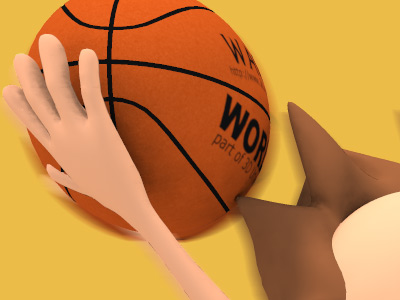
RESOURCES
This article uses material from the Wikipedia articles "Basketball", "Basketball moves", and "Layup", which is released under the Creative Commons Attribution-Share-Alike License 3.0.
© Stories Preschool. All Rights Reserved.
